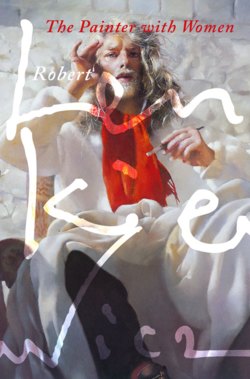Читать книгу The Painter with Women - Robert Lenkiewicz - Страница 6
Foreword
ОглавлениеA short while after I opened the New Street Gallery on Plymouth’s Barbican in 1987, Robert Lenkiewicz, with his insatiable curiosity about art and artists, became a regular visitor to the exhibitions. Since my first visit to Plymouth as a student some ten years earlier, I had been an admirer of his work, which had left a lasting, powerful impression, completely different from anything I had encountered at the time in galleries in London or abroad.
I soon asked him if he would be interested in showing some paintings, and he eventually agreed to a small showing of his aesthetic notes with nothing for sale – designed to test, I now realise, the seriousness of a commercial gallery. We hung that show together late one night, the paintings packed tightly into a tiny, blacked-out room. The nature of the explicit subject matter in a provincial city provoked a polarised response in visitors to the gallery; many fascinated, some shocked or even offended – despite a sign posted outside which warned that the local council deemed the show potentially unsuitable for those under eighteen – to which Lenkiewicz had added, ‘This is not the painter’s opinion.’ I began to visit him in his studio on a regular basis and follow the progress of his work at close quarters. Lenkiewicz became an inspiring influence. Like him, the gallery had little money: the raison d’ être was to do something interesting for itself, and survive.
Over the course of the next two years, New Street Gallery staged three exhibitions of paintings for Lenkiewicz’s Project 18 – The Painter with Women: Observations on the Theme of the Double. These were preliminary showings of the full exhibition which was finally exhibited at the International Convention Centre in Birmingham in January 1994 under the auspices of the Halcyon Gallery. These early showings were raw and basic in their presentation: cheap, cramped and claustrophobic – the complete opposite of the large-scale, slickly marketed Birmingham version.
Of all Lenkiewicz’s Projects, The Painter with Women was arguably the longest in the making, and during those six years it underwent significant development. This book charts that evolution through the artist’s own extensive diaries and other first-hand material, in particular the photographs and diaries of his friend, the photographer Dr Philip Stokes.
The Project began, almost inadvertently, as the result of events in Lenkiewicz’s private life, and as a reaction to the negative critical response to his previous Project on local education. The original theme of ‘The Double’, which harked back to earlier ideas about relationships, soon took on new dimensions with Lenkiewicz’s adoption of classical allegories, in particular, that of the monastic St Anthony of Egypt. His research into the St Anthony theme took him from Athanasius’ Life of Anthony and Grünewald’s Isenheim Altarpiece through to more modern interpretations by French writer Gustave Flaubert and, especially, composer Paul Hindemith in his 1935 opera Mathis der Maler. As Lenkiewicz’s identification with his alter ego of Anthony grew, the sub-text of the Project increasingly became a meditation on the artist’s own life.
Two factors had a significant impact on the Project: firstly, Lenkiewicz’s decision to collaborate with a commercial gallery for the first time in presenting the full exhibition outside his own premises; secondly, the diagnosis of a serious heart condition, the treatment of which he delayed to meet the exhibition’s deadline. He later explained the consequent result as follows:
There has never been a proper showing of that Project and I feel it will make more sense when shown as a collected whole … At that time I was not very well and was also racing against time for a commercial exhibition which was held in the Birmingham International Convention Centre in 1994. It was the only time I have really compromised, but I did it because I believed that it would raise enough money to purchase these buildings in which the studio and library are housed. That’s not to say that I didn’t present the collection as I wanted under those circumstances. However, the exhibition lacked the proper context for the information. (R.O.Lenkiewicz, 1997. Mallett, F. and Penwill, M. Plymouth: White Lane Press).
As Phil Stokes had foreseen in his catalogue essay, printed independently by Lenkiewicz, the Birmingham exhibition was either ignored by national critics or incurred a kind of superior contempt – condemned, just as Lenkiewicz had ironically predicted from the outset, as further evidence of a lascivious lifestyle. This book aims to challenge that view and elucidate Lenkiewicz’s original intentions, which evolved into a daring and ambitious attempt to link his own radical theory of the physiological basis of human behaviour to the history of Western thought and religion. Even if, for various reasons, it did not entirely succeed, it was nevertheless an extraordinary and heroic achievement.
Francis Mallett, May 2011
Editor’s note: I have used the spelling St Anthony in accordance with common practice. Robert Lenkiewicz usually spelled the anchorite’s name as St Antony.
